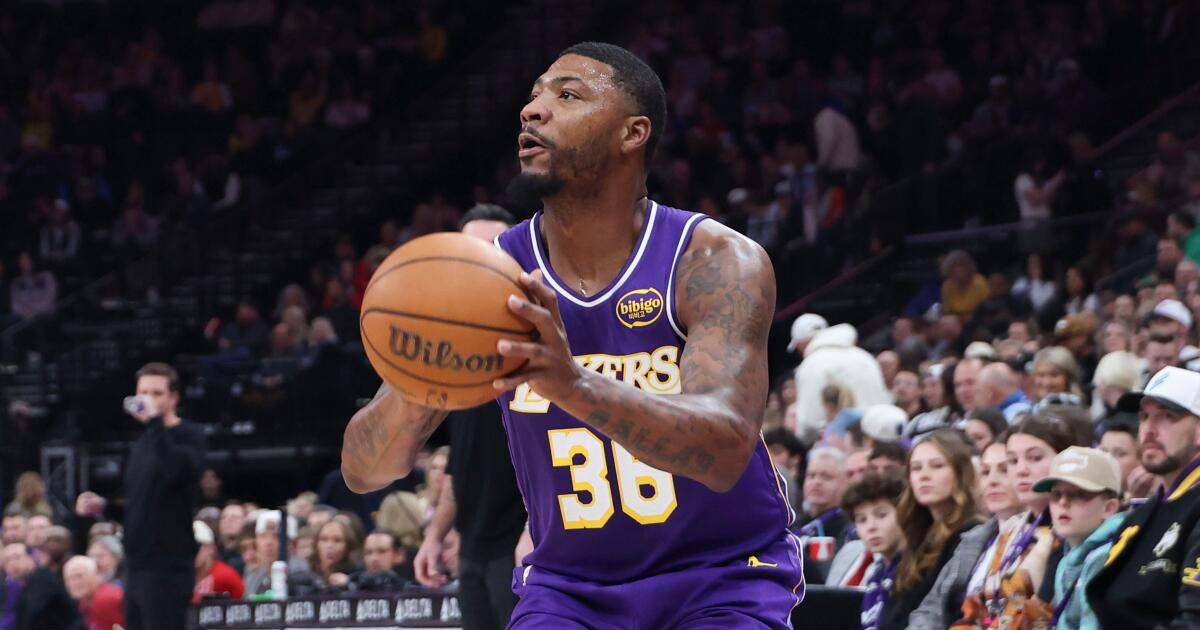Lakers’ Marcus Smart fines $35,000 for making obscene gesture
Lakers guard Marcus Smart has been fined $35,000 for making an obscene gesture toward a game official during halftime of the game Thursday against the Utah Jazz, the NBA announced Saturday.
Smart was assessed a technical foul for his action as walked off the court for intermission after exchanging words with an official.
The Lakers pulled out a 143-135 victory in Salt Lake City when the 31-year-old defensive specialist scored nine of his 17 points by making three of four three-point shots in the fourth quarter.
Smart, who is averaging 10.6 points, 2.9 assists, 2.5 rebounds and 1.6 steals in 17 games this season, will again be in the starting lineup Saturday night in place of injured Austin Reaves when the Lakers take on the Clippers at Intuit Dome.
